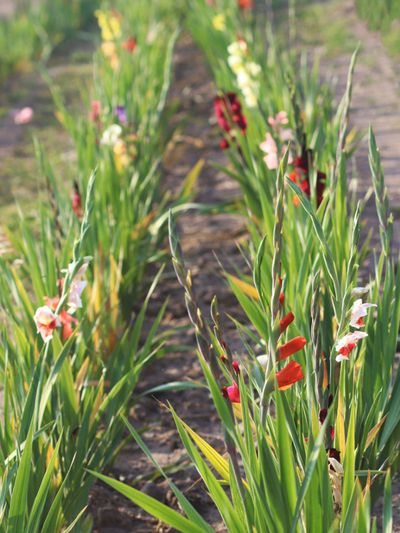Gladiolus botrytis diseases are not uncommon, so knowing the signs and how to manage them is vital to your plants.
Identifying Botrytis on Gladiolus
Botrytis is a fungal infection caused by Botrytis gladiolorum. The infection is also called neck rot or corm disease. The fungus infects and damages leaf, flower, and corm tissue. The corm is the tuber-like storage organ of the roots of the plant. Above the soil you’ll probably first see glads with botrytis by noticing spots on the leaves and stems. Leaf spots caused by botrytis may be small, round, and rusty red. They may be yellow to brown or the spots can be larger, more oval in shape, and with a red brown margin. Look also for rot at the neck of the plant stem, just above the soil. The flowers will first show signs of infection with water-soaked spots on the petals. Decline is rapid in the flowers and these spots will quickly transform into a slimy, moist mess with grayish fungal growth. The corm, which is under the soil, will rot with botrytis infection. It will become soft and spongy and grow black sclerotia, the body of the fungus.
How to Control Gladiolus Botrytis Blight
Botrytis blight affects gladiolus around the world, wherever it is cultivated. When planting this flower, use corms that have been pre-treated to prevent getting the disease in your soil. If you do have the disease in your garden, it will spread through infected corms and decayed plant matter. Destroy all affected plant material. If you haven’t been able to prevent gladiolus botrytis diseases in your plants, treating gladiolus botrytis requires the use of fungicides. Your local extension office can help you choose and learn how to use the right fungicide. Generally, botrytis can be managed with chlorothalonil, iprodione, thiophanate-methyl, and mancozeb.
